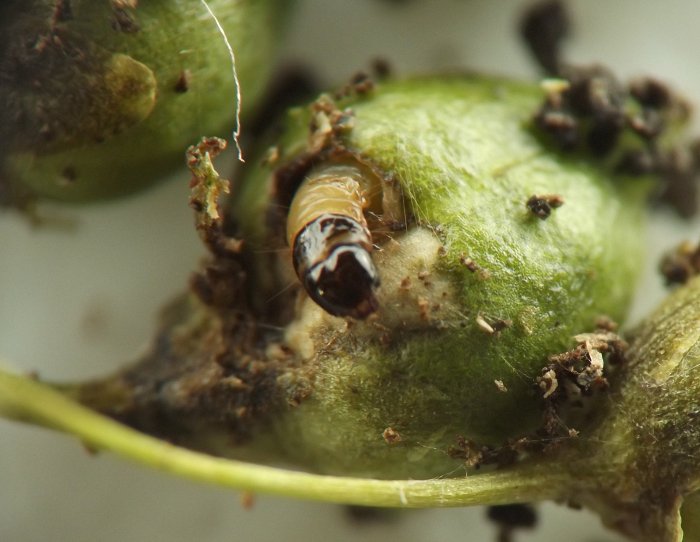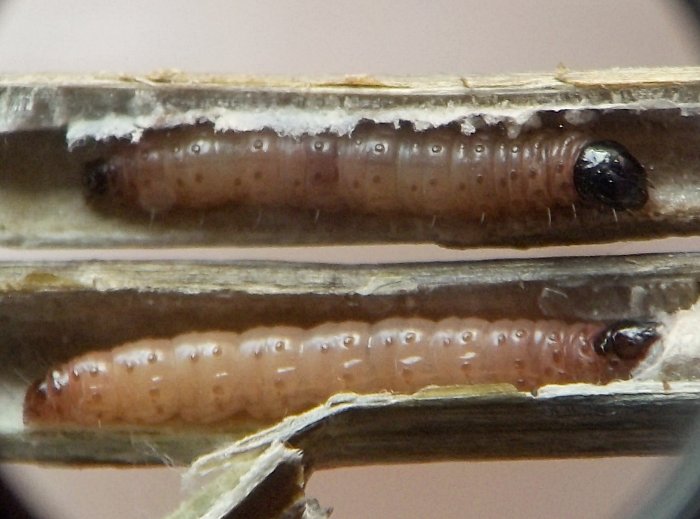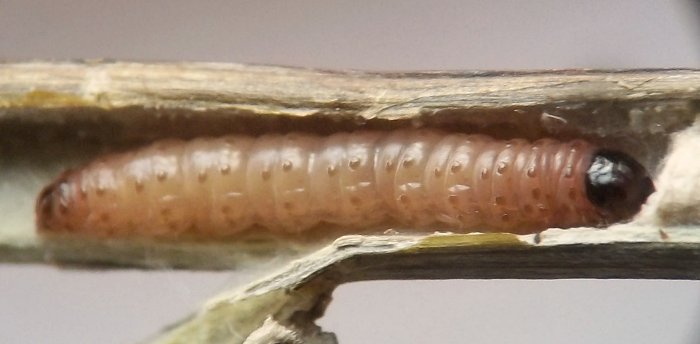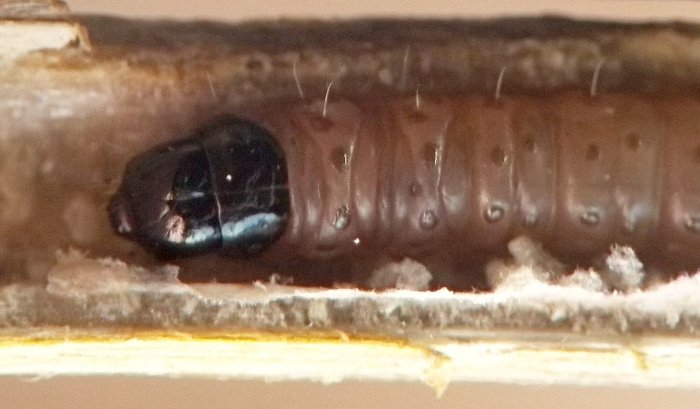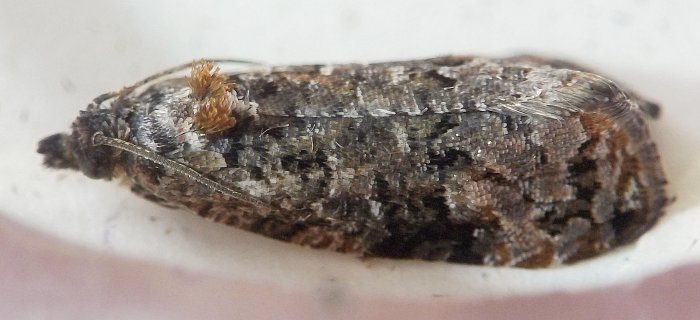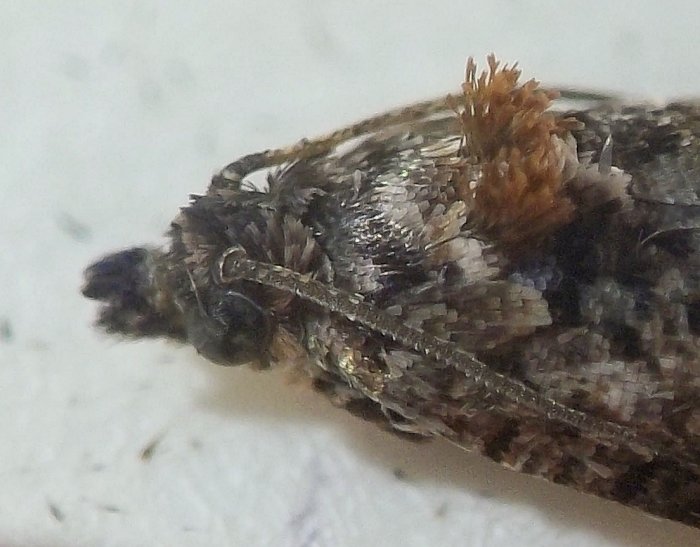Stem borer (Lepidoptera: Tortricidae) in Scrophularia [0499]
| Order | Lepidoptera |
|---|---|
| Family | Tortricidae[T,L,P,A] |
| Lower taxon | Endothenia cf. hebesana |
| No. spp. involved | One confirmed |
| Feeding mode | Stem borer |
| Host plant | Figwort, Scrophularia sp. (Scrophulariaceae) |
Later-stage larvae of this tortricid feed in the stems of the host, excavating galleries and expelling frass (or sometimes retaining it in the tunnels). They overwinter in the stems and emerge as adults in spring -- that is, if they manage to avoid winter predation by birds who seem to have caught on to this plant-insect association in the geographic area covered by the current study. In fact, it was the birds' holes pecked in figwort stems as they hunted Endothenia larvae that first clued the author in to the presence of this borer inside the stems.
Early-instar larvae may feed in the fruits of the host before proceeding to the stems; this is documented in the images below along with the stem feeding.
The species identity is not yet known for certain, but E. hebesana has previously been recorded from Scrophularia (Barnd et al. 2020).
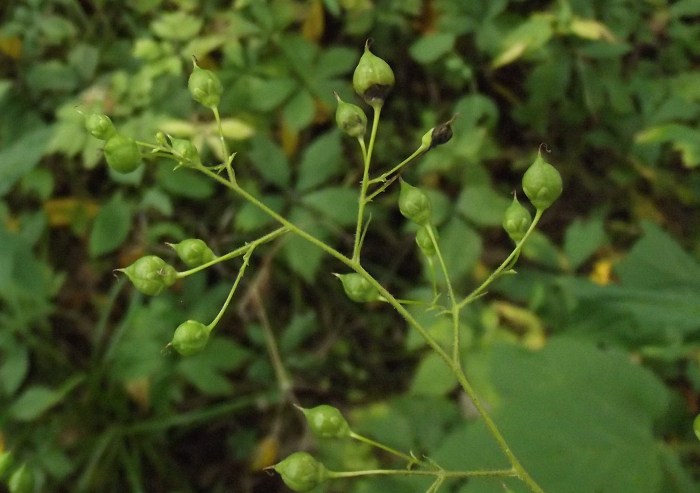
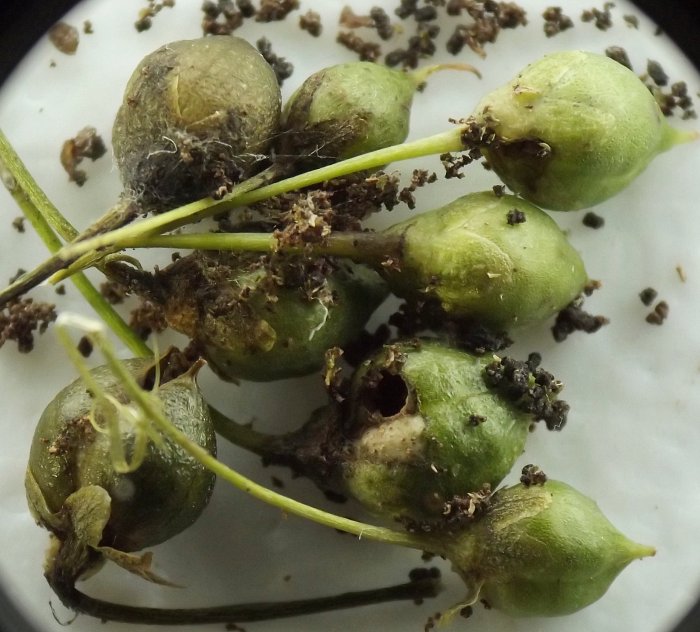





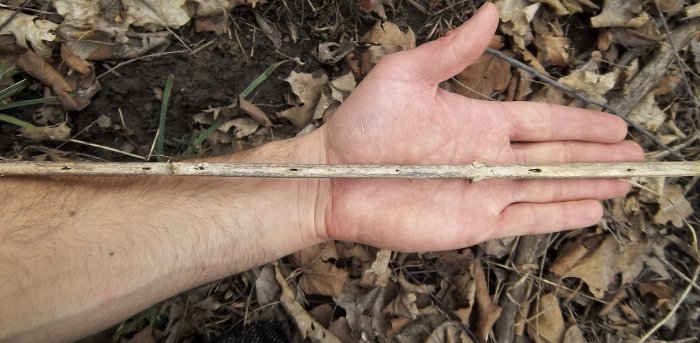
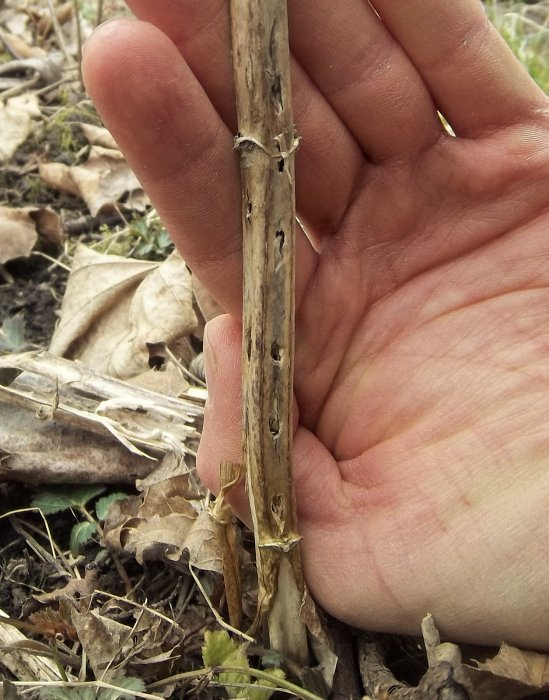


Specimen data for images
Coll. 01/01/17, photos on 02/05/17 (01-02, scraped stem entrance and larva in tunnel inside); coll. 10/18/16, photos same day (03-06, reddish-purple larvae in stems); coll. as larva in stem on 02/05/16, em. 05/24/16 (07-09, adult and pupal exuviae); field photos on 04/10/16 (10-12, bird-attacked stems in the field); coll. winter ?2016, photo on 07/27/22 (13, bird-attacked stem); coll. 08/23/21, field photo same day (18, fruit), additional photos 08/26/21 (14-16, tunneled fruit w/ larva); field photo on 09/29/23 (17, heavily tunneled stem with extensive frass accumulation on exterior).
References
Barnd, B., Thomas, A.W., Zimlich, R.L., O'Connor, M., and R. Hardy. 2020. Species Endothenia hebesana - Verbena Bud Moth - Hodges#2738. Species page on BugGuide.net. Retrieved October 2, 2023 from https://bugguide.net/node/view/132143.
Page created 10/02/23. Last update: 11/19/24
